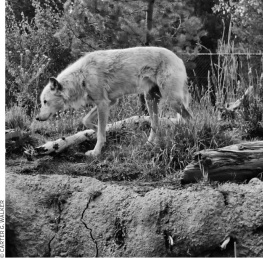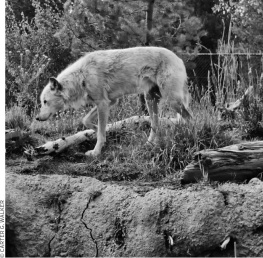

Published by The History Press
Charleston, SC
www.historypress.com
Copyright 2020 by Kelly Hartman
All rights reserved
Front cover: author photo; inset: Gallatin Historical Society/Gallatin History Museum.
First published 2020
E-Book edition 2020
ISBN 978.1.43967.043.9
Library of Congress Control Number: 2020932097
Print edition ISBN 978.1.46714.454.4
Notice: The information in this book is true and complete to the best of our knowledge. It is offered without guarantee on the part of the author or The History Press. The author and The History Press disclaim all liability in connection with the use of this book.
All rights reserved. No part of this book may be reproduced or transmitted in any form whatsoever without prior written permission from the publisher except in the case of brief quotations embodied in critical articles and reviews.
Up ahead theys a thousan lives we might live, but when it comes itll ony be one.
John Steinbeck, The Grapes of Wrath
I have made peace with my God, and will go to him
knowing that I am fully prepared.
Seth Danner, July 18, 1924
CONTENTS
SETH DANNER FAMILY TREE

PREFACE
While I cant say that Seth Danner is innocent, I cant say that he is guilty, either.
When I was about five years old, my family visited a museum in downtown Bozeman, Montana, to cool off on a hot day. All I remember is the brick of the building, but my dad vividly remembers the gallows located inside the building. He remembers how much it bothered him visually, but that is all he remembers. The story of the gallows was missing and had been missing until twenty-five years later, when I became curator at that same museum, the Gallatin History Museum.
To cope with having such a grim reminder of mortality to walk under every day, I decided to face that darkness to try to find a light. And I did. Its not a glimmering light of overwhelming hope or joyno, its a light of illumination. I can say that I understand life a little better, the extreme hardships those in our past have faced and those we still face today. I understand that human life is interesting, complicated and yet so very simple. I hope those who read this book see this paradox of qualities in the characters of Seth Danner and those who condemned him.
There are many to thank for the completion of this book, but a few in particular were invaluable to my work: Margie Kankrilik, for transcribing hundreds of newspapers articles and letters and for putting the trial transcript into a digital format; Dillon Jones, for scanning all of the newspaper articles; and Jody Boland for hours of research on the Danner family tree. A big thank-you to Richard Brown for his assistance researching jail blueprints, the gallows and maps of Central Park; and Norman Miller and Drew Carter for accompanying me to the crime scene on multiple occasions. I would also like to thank the Gallatin History Museum for its support as I obsessed over this case, as well as the descendants of those related to the case with whom I was able to talk and interview. This is their heritage, and I am honored to have been able to share their history.
We may never know the true story. Maybe the light will shine more in one direction for you than for others. In any case, there is a question, and that is reason enough to tell his story. So, on behalf of Seth Danner
INTRODUCTION
Q. Now, if you will, continue and tell us in your own way, Mr. Smith, what events followed.
A. Well, then, the next morning we were supposed to meet there at 11 oclock in the forenoon, but we were busy, and we met down there aboutsomewhere around one thirty. Mrs. Danner showed us where the bodies were. That was about quarter to two1.45.
Q. Of what day?
A. The 18th day of June.
Q. 1923?
A. 1923. So then I dug aroundprodded around, and I stirred up a leg. Then I notified the Coroner.
The sky was cloudy, a slight wind giving the sixty-degree weather a bit of a chill, especially where the road breaks out into the open fields of Montana. It was June 1923. From Bozeman, its a thirty-mile drive to Three Forks, down a dirt road known as the famous Yellowstone Trail, with the small towns of Belgrade, Central Park, Manhattan and Logan along the way.
Its about 1:30 in the afternoon when a police car pulls off the road halfway between Belgrade and Manhattan, just a few thousand feet from Central Park. Another car containing a man in uniform and a young woman is already parked there, having come from the opposite direction in Three Forks. In the full group are Three Forks deputy sheriff Pierce Elmore, Gallatin County sheriff Jim Smith, Deputy Max Howell and a Mrs. Iva Danner. The latter leads the men from the road through thick tangled underbrush less than ninety feet. They pick their way past disturbed ground, where the ghosts of two tents remain in the odd way grass comes back through trampled earth. Iva stops and points to a waterlogged depression in the ground, telling the men to dig there. Equipped with a stick, Smith begins to prod the indicated earth beneath a few feet of water. Its uncertain whether he is skeptical of the womans story or not, although Elmore was certainly moved enough to give him a call. Nothing had been found the two previous times Elmore had been out there, once just the night before, when he had asked Smith to meet him there. Suddenly, something comes to the surface, and there is no mistaking what it is: a human leg bone.

The crime scene grave site. Originally published in True Detective magazine, July 1935. Gallatin Historical Society/Gallatin History Museum.
Smith feels more confident now of having brought Seth Danner, Ivas husband, to the Gallatin County Jail the night before. Then, it had been as a precaution; now, it seems it was a necessity. Smith moves the group away from the depression, sending Deputy Max Howell to Bozeman with Iva, where an official statement will be taken in the presence of an attorney and to notify the coroner in Bozeman. When Coroner E.W. Harland arrives, the digging is commenced, revealing the bodies of two unknown people lying side by side in a shallow grave. As the bodies make their way to Bozeman, they pass a deputy and Iva, who are headed back to her home in Three Forks after taking an official statement. Iva, seeing the conveyance, reportedly faints.
In less than twenty-four hours, her story is on the front page of the Bozeman Avant Courier: Conscience-Stricken Wife Tells of Husbands Brutal Murders. The obscure Danners quickly become household names, dominating the press for the next year. Her story would appear in its near entirety four times prior to the trial, while Seths would only appear in small fragments. The headlines read like a cross between a detective novel and a soap opera:
Slew Married Pair with Campers Axe, Wifes Accusation
Accused Slayer Says He Loves Wife Who Told
Danner Used Murder Axe as Household Tool
Slayers Wife Tells Why She Revealed Crime
Fear of Husband Not Conscience Led to Avowal
Next page










